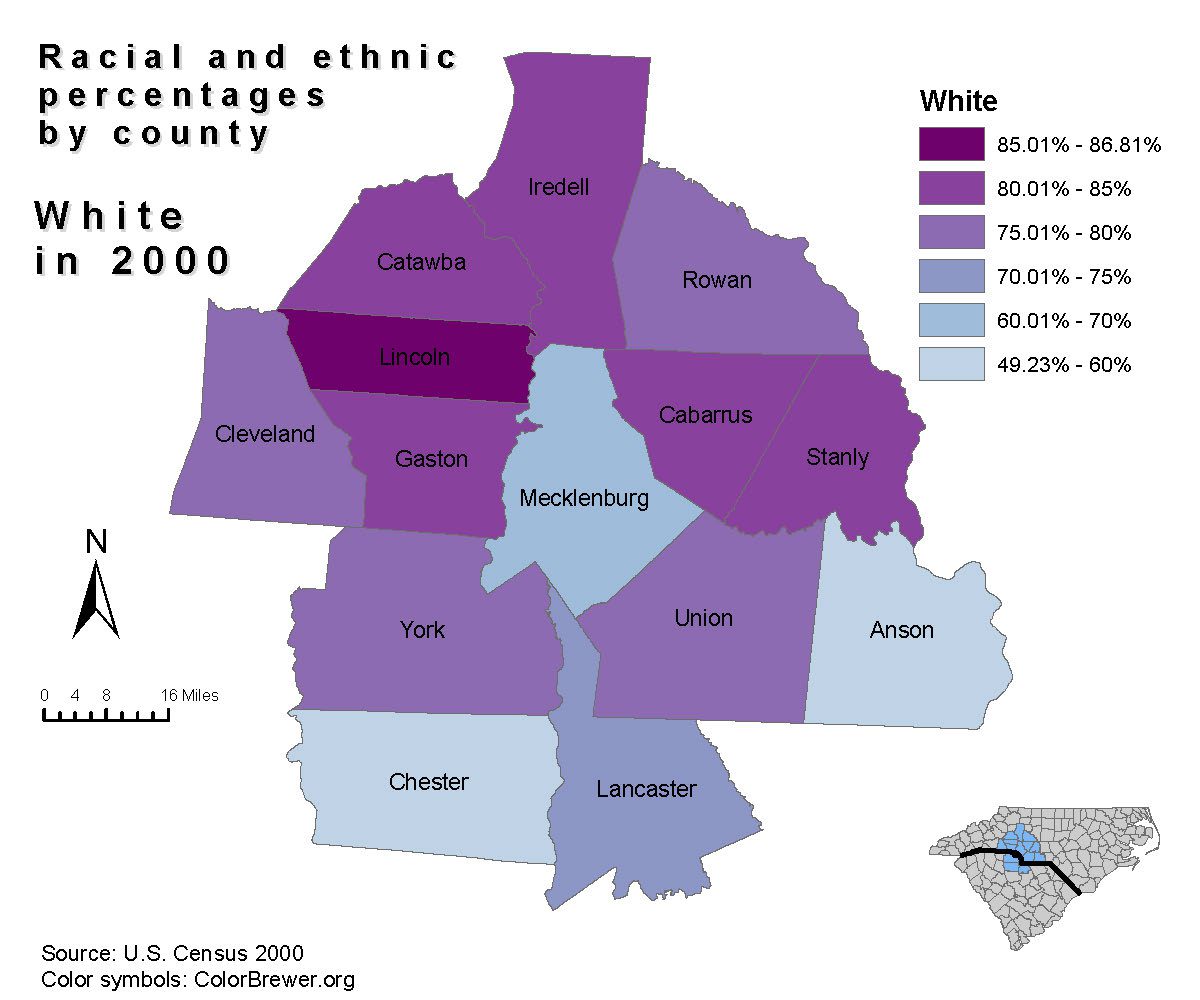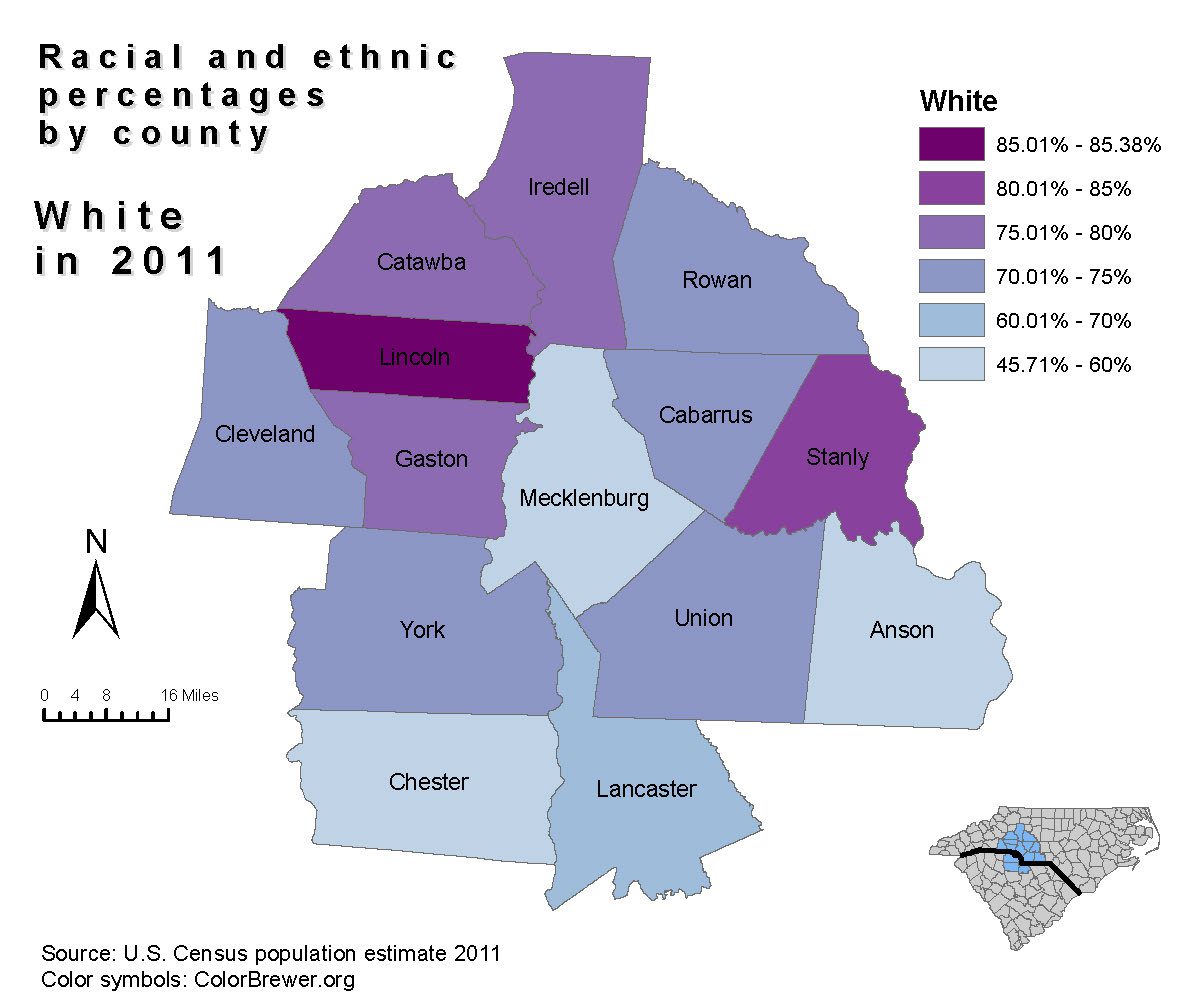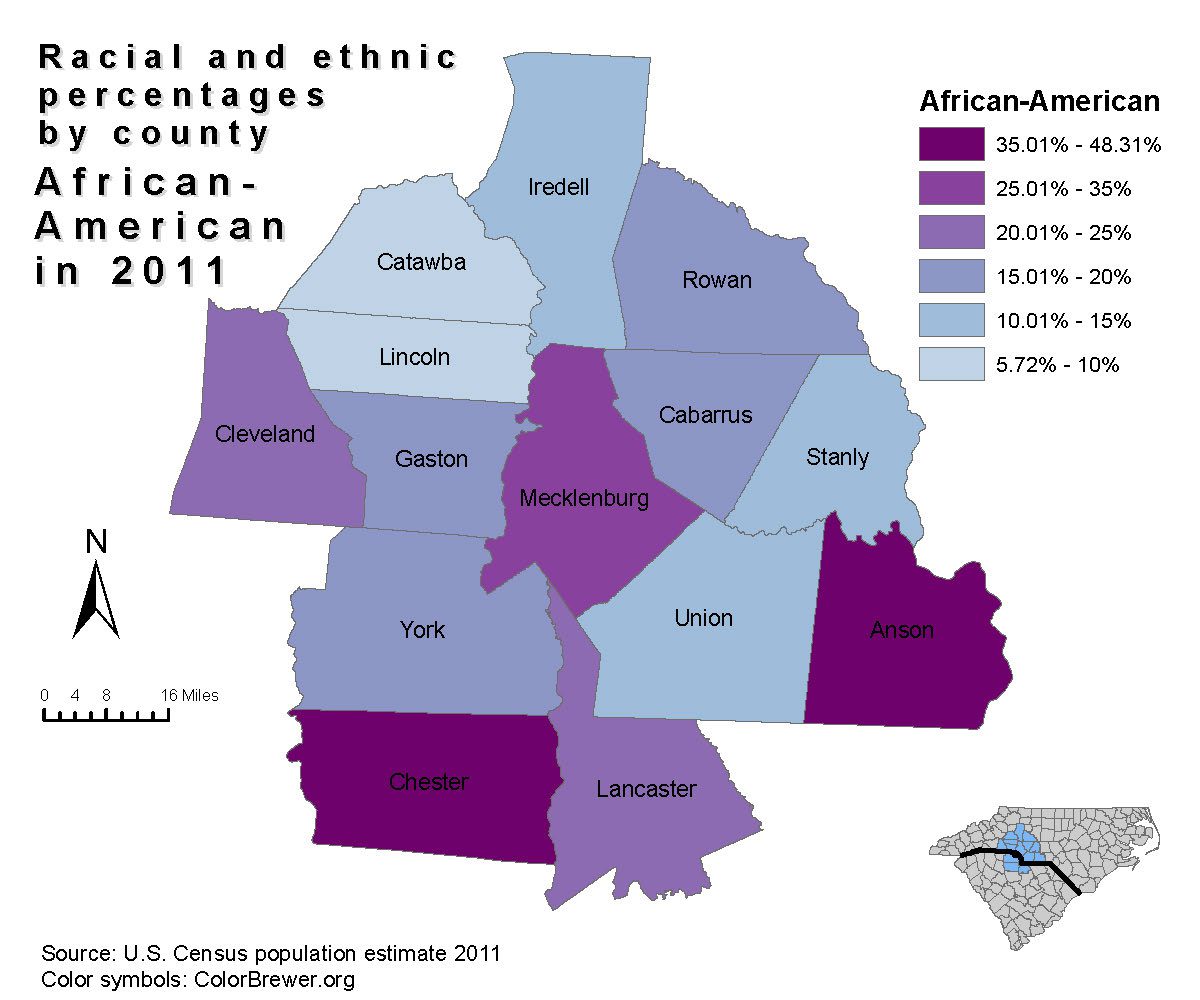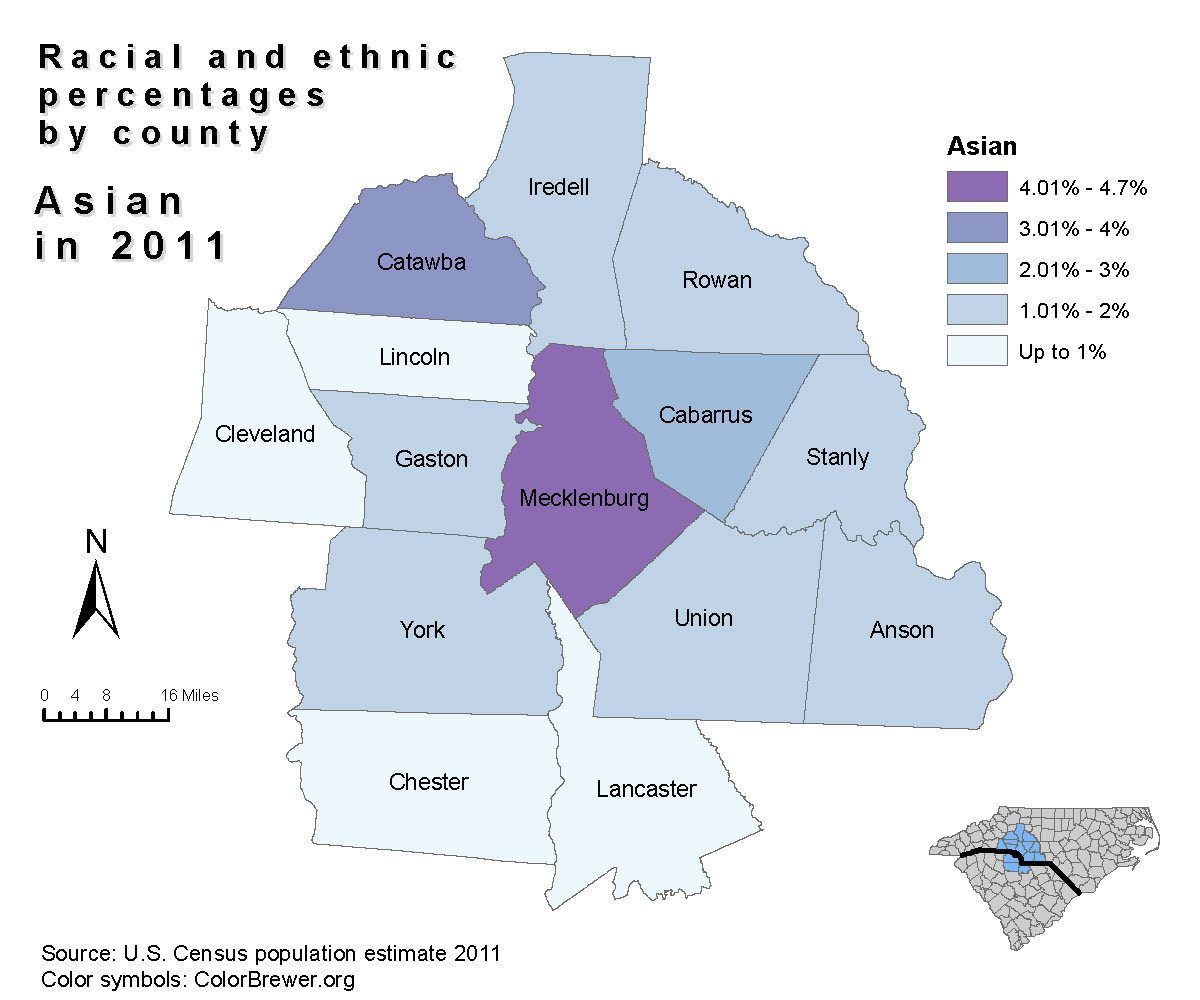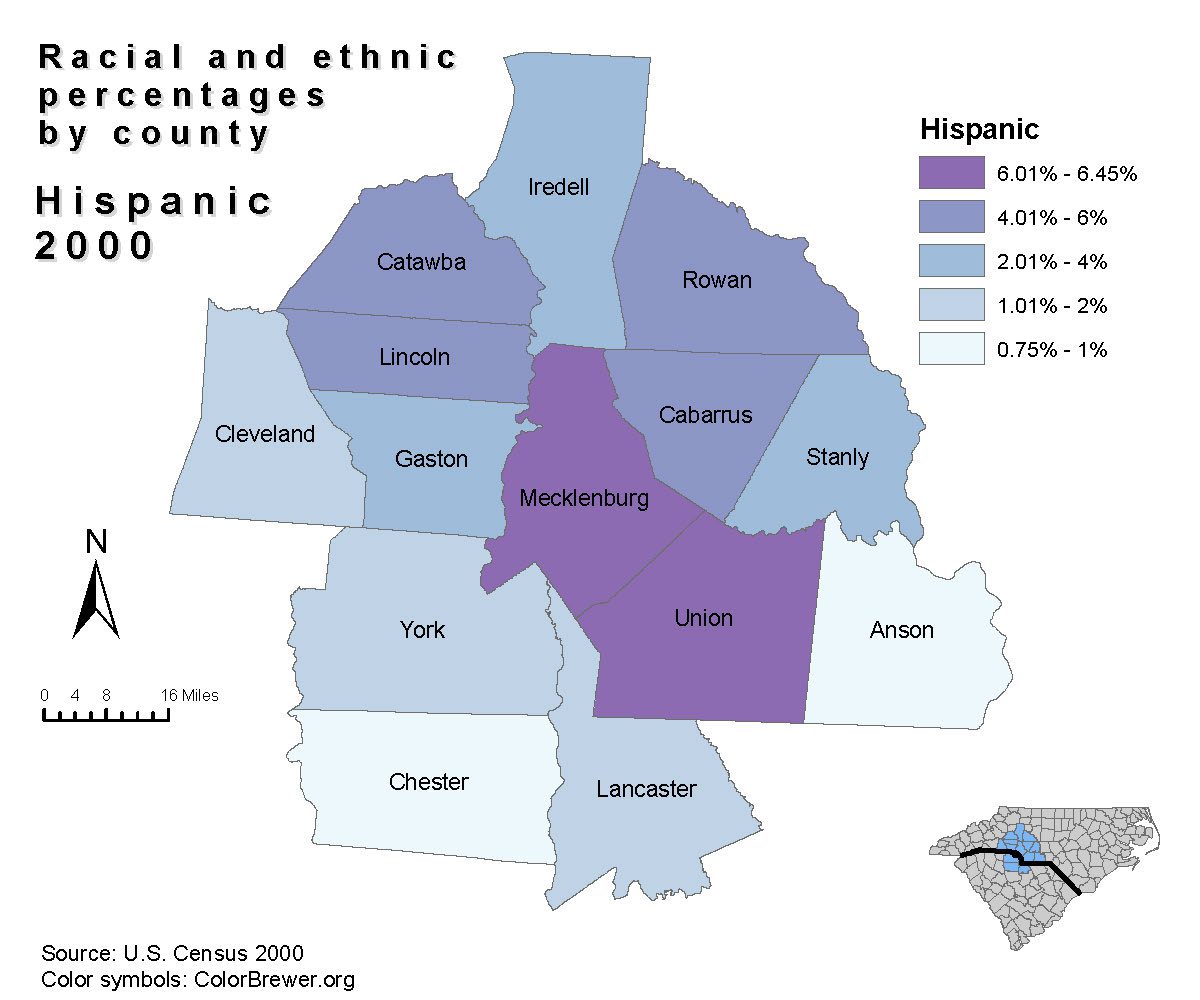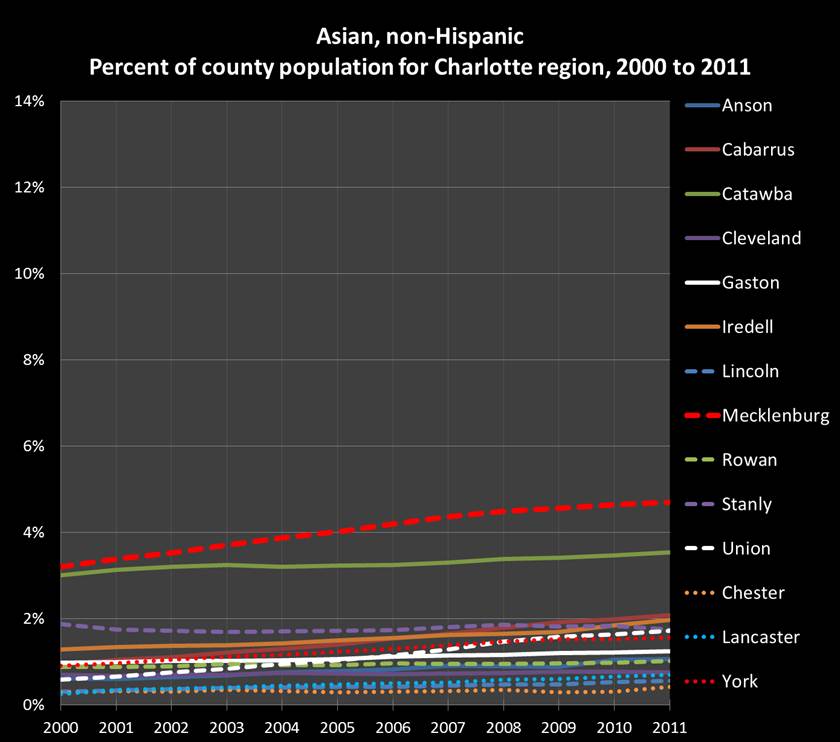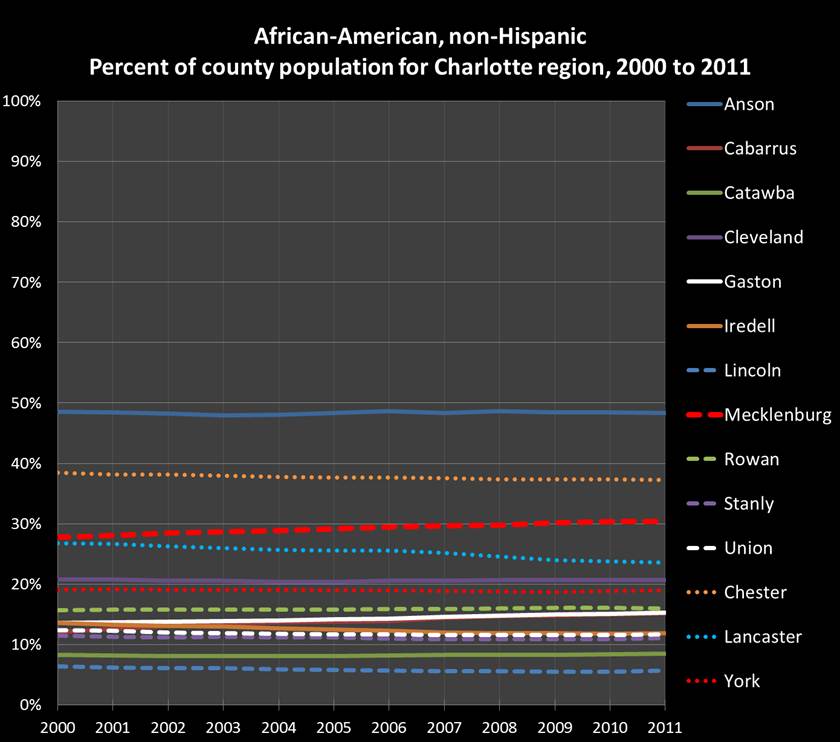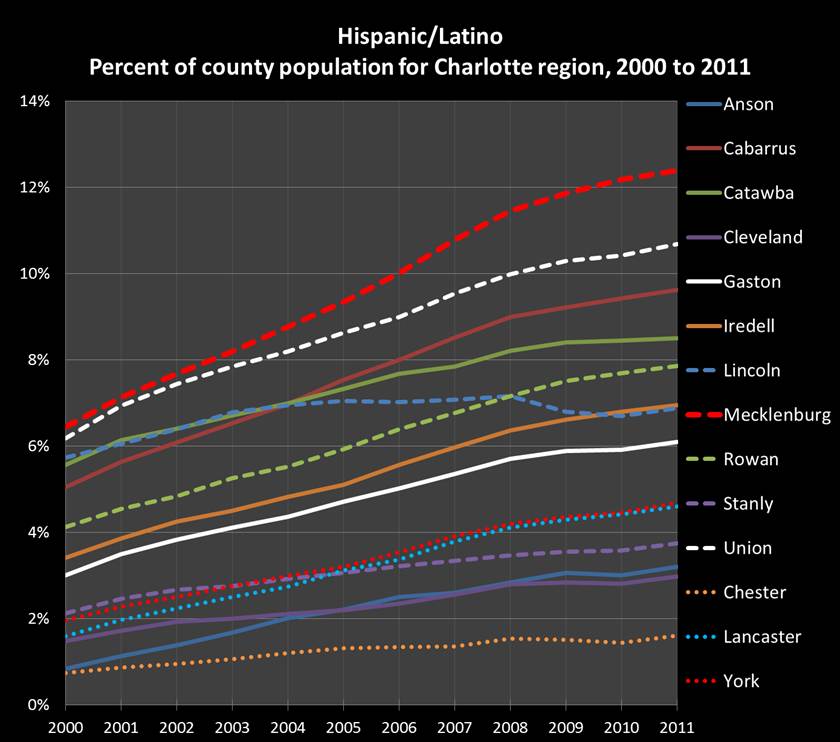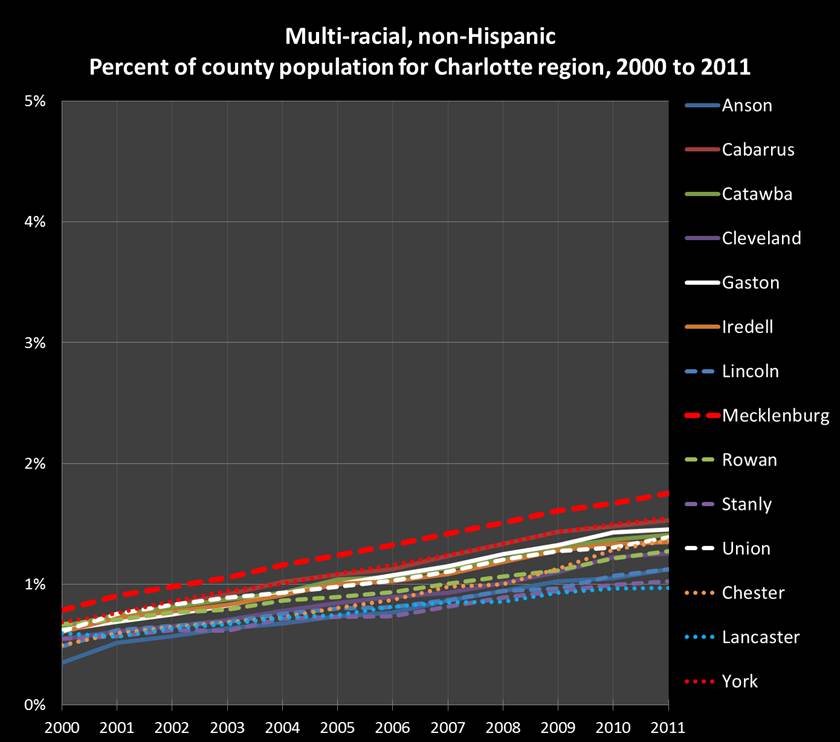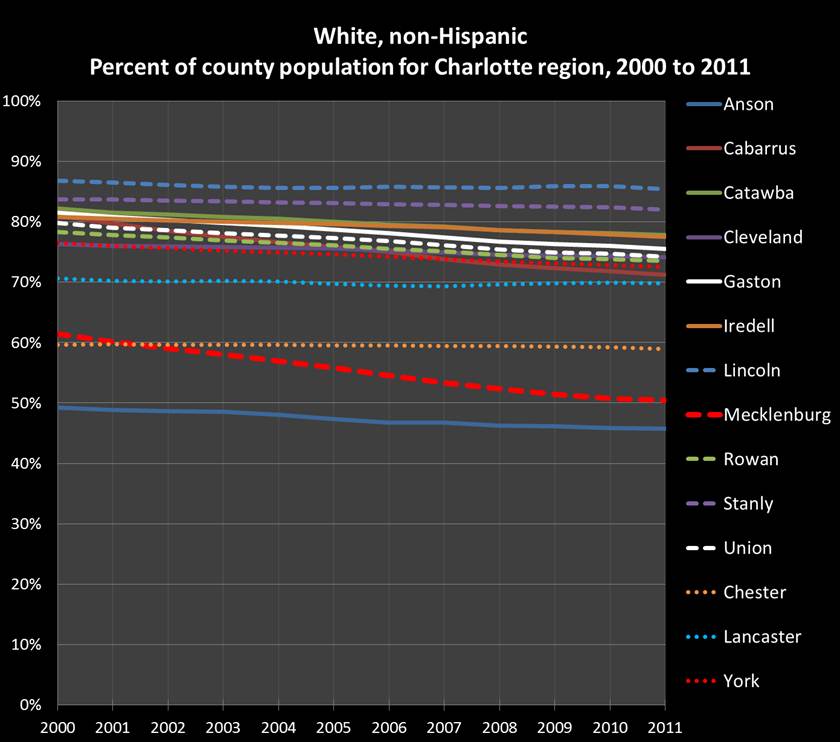Charlotte region: Understanding the new diversity

The rise in the number of Hispanic, Asian and multiracial residents has been the biggest change in population diversity in the Charlotte region for more than a decade. The growth and distribution of these groups has not been even, which creates notable differences among the region’s urban, suburban and rural communities.
Explore a host of data for the region, including the recently released 2011 population estimates, on our Regional Indicators site.
The pairs of maps that follow show the percentage of separate racial groups in the 14 counties of the Charlotte region (centered on the core county of Mecklenburg) at two points in time: the year 2000 (Census 2000) and recently released census estimates of population from 2011. (Note that the map categories change between racial groups to make patterns easier to see).
White
White 2000
White 2011
The proportion of white population declined in the urban and most of the suburban counties between 2000 and 2011. This pattern occurred despite white population growth of nearly 15 percent during the period. The faster growth of other racial and ethnic groups compared to whites results in a relative decrease in the percentage of whites in the population for nearly every county in the region. The overall rate of growth was 27 percent for all racial groups from 2000 to 2011.
African-American
African-American 2000
African-American 2011
Since the Charlotte region has been touted as a top destination for African-Americans for a number of years, one might expect to see increasing percentages of African-Americans in the region’s population. African-American percentages, however, remained nearly the same both in Mecklenburg and in the surrounding suburban and rural counties. There is a slight change in population percentages: from 19.8 percent in 2000 to 20.9 percent in 2011 for the combined 14-county region. As a result, the maps showing the percentage of the population that is African-American in 2000 and in 2011 are similar.
Asian
Asian 2000
Asian 2011
Although a smaller group in all counties, the Asian population shows significant changes over time. Most of the change occurred in the urban core, with the exception of Catawba County, which held onto the second highest percentage of Asians from 2000 to 2011.
Hispanic
Hispanic 2000
Hispanic 2011
The most significant changes to many regional counties during this period came in the Hispanic/Latino population. Charlotte was identified as a Hispanic/Latino “hypergrowth” city by the Pew Hispanic Center based on increases between 1980 and 2000. These maps show continued strong growth in and around Charlotte after 2000, with many counties in the region more than doubling their percentage of Hispanic residents from 2000 to 2011. Mecklenburg and Union started the decade at more than 6 percent and continued to have the highest concentration of Hispanic/Latino population in 2011. While the growth in Hispanic population continues to be high over this time period, the geographic pattern is relatively stable, with suburban N.C.counties tending to have higher percentages than those in South Carolina.
Year-to-year changes
It is clear from the maps above that the region did not start in 2000 with evenly distributed racial and ethnic groups. The charts below show the annual percentage for individual racial or ethnic groups in line graphs.
Click each button to see graphs showing different racial/ethnic groups. (Note that the scale of the charts changes for some groups, to make patterns easier to see).
AsianAfrican-AmericanHispanicMultiple-RaceWhite
Asian
African-American
Hispanic
Multiple-Race
White
Source: U.S. Census (2000, 2010), census estimates all other years
The graph showing the percentage of white population in each county shows both the wide range across the region (from around 50 percent white in Anson, to 85 percent white in Lincoln) as well as stable to slowly declining percentages within counties over time. Mecklenburg has the clearest pattern of a decreasing percentage of whites. Several suburban counties show a more gradual pattern of decreasing white percentage in their populations. Several counties including Lincoln, Stanly and Chester maintain stable percentages of whites.
The African-American population graph also shows a wide variation in the percentage between counties in the region. The stability of African-Americans percentages over time is clear. Many counties see no change in African-American percentages over the 12-year period, with the few changes staying within a range of 1 to 3 percentage points. It is important to note that while percentages were relatively stable, the numbers did change dramatically. In 2000, there were 193,390 African-Americans in Mecklenburg, and the estimate in 2011 is 286,493. It shows the dramatic scale of the overall growth that an increase in the core county of more than 93,000 in this group wasn’t enough to do more than maintain a relatively stable share of the population.
With Asian populations, (note the 5 percent maximum on that graph scale), Mecklenburg and Catawba stand out more from the other counties with higher percentages in 2000, but Mecklenburg is the only county to exceed 4 percent in the region by 2011. Most counties fall in a narrow range of each other at around 2 percent. Mecklenburg’s growth in Asian population also shows a marked leveling off at 2008 in conjunction with the economic downturn.
The Hispanic/Latino chart (at a different scale to make trends easier to see) shows a consistent upward pattern across the region, although starting from a fairly wide range of values in 2000. In this group there is a more widespread leveling off of increases around 2008, as with Mecklenburg’s Asian population. Lincoln shows the largest dropoff around 2008, though the rate of increase in that county begins to slow as early as 2004. Using the same case of Mecklenburg County, the number of Hispanics increased during this period from 44,871 in 2000 to 116,994 in the 2011 estimate.
Owen Furuseth, UNC Charlotte’s associate provost for Metropolitan Studies and Extended Academic Programs, noted recent speculation about Hispanics leaving the area during the recession. But he pointed to the persisting increases, although at a less dramatic pace, as suggesting a “settling in” process, with new immigrant groups moving to communities where they already have connections and family. This is a pattern Furuseth has seen statewide.
The multiracial group was not mapped because of the low starting percentage and consistent pattern of increase across the region. It is worth looking at the line graph to see the relatively narrow variation and consistent increase across time. All counties were less than 1 percent in multiracial population in 2000, but typically increased to between 1 and 2 percent. This pattern was much more consistent over time, showing no slowdown during the economic downturn that was noted in Hispanic/Latino and Asian populations. This rapid and consistent increase in the multiracial group puts the region solidly in the mainsteam nationally, as this group has typically been the fastest growing, especially among younger age groups.
During the 12 years examined here, the region’s 14 counties’ increase in minority population varied considerably by group. Three groups’ growth added significantly to the region’s diversity. The multiracial group increased by 187 percent, Hispanic/Latinos by 147 percent and Asians by 93 percent. Whether the geographic distribution of this growth strengthened existing patterns (Hispanic/Latino), focued on the core (Asian) or were widely and evenly dispersed (multiracial), the result is a growing complexity of racial diversity within the region.
Heather Smith, professor in geography at UNC Charlotte, suggests that “the growing multiculturalism of the Charlotte urban region is further evidence of the city’s position as a pre-emerging immigrant gateway.” Nationally, these emerging centers for immigration have shown strong overall population growth coupled with surging populations of foreign-born. These trends are self-reinforcing in many cases.
“The establishment of initial Hispanic settlement clusters will often serve as a base for subsequent waves of immigrant settlement,” Smith notes.
The Charlotte Regional Indicator project provides tools for exploring these new population figures for the 14-county region with an interactive graph tool by clicking here. Figures on individual counties are available in the same format – click here.
